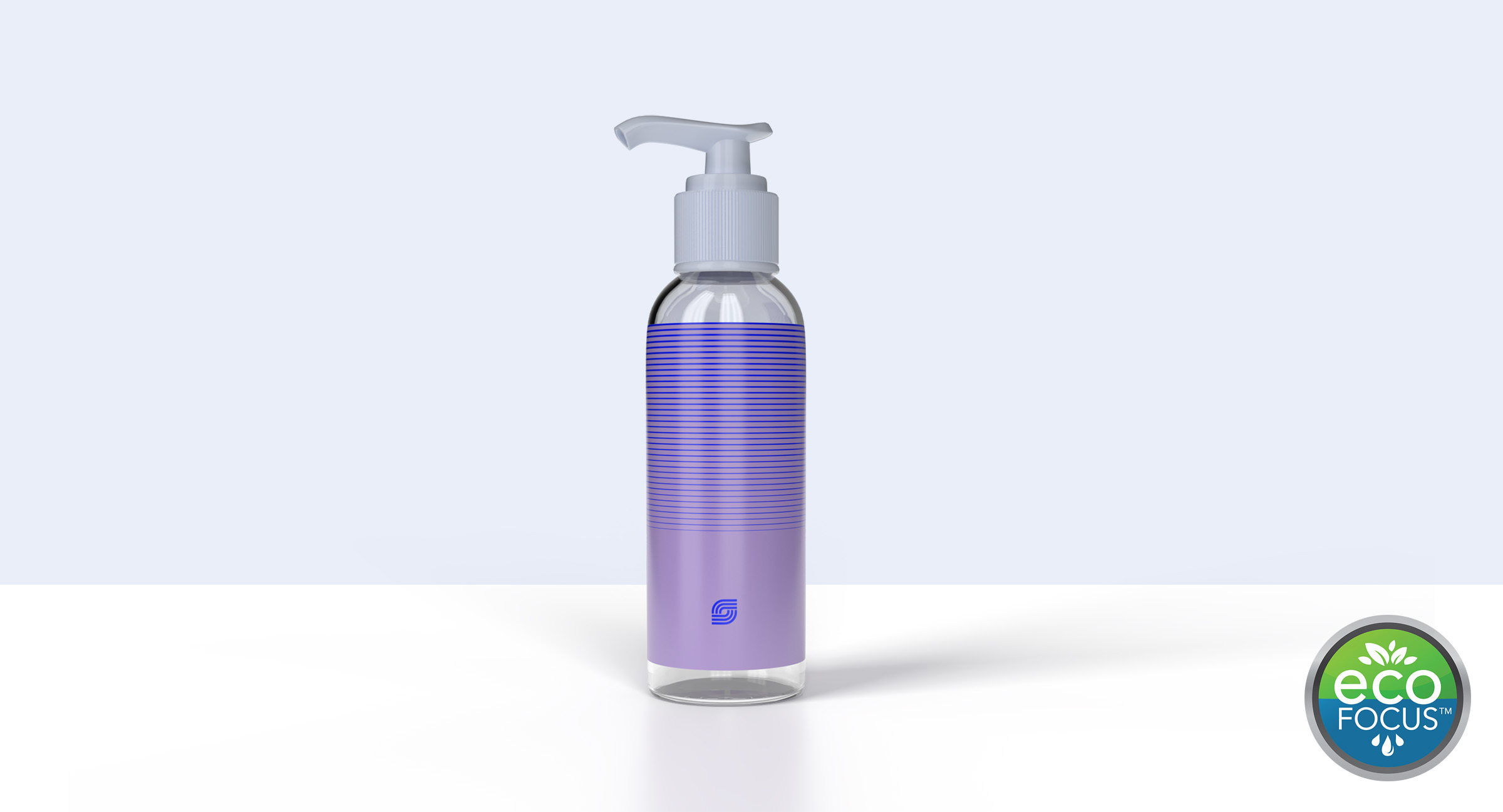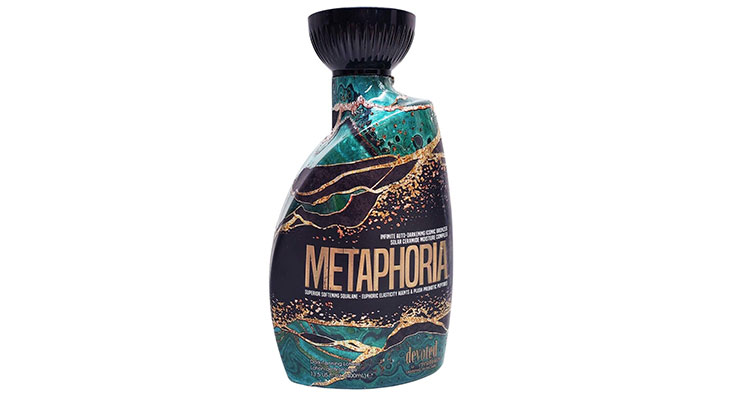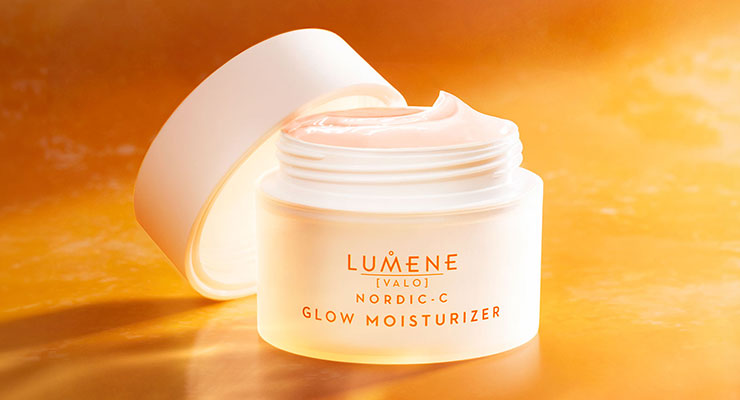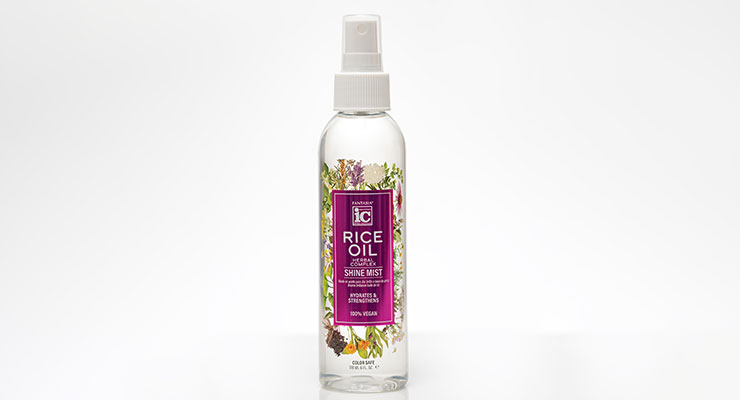Joanna Cosgrove, Contributing Editor02.26.24
Labels are prime packaging real estate for connecting with consumers. Not only are they one of the most economical packaging accoutrements, but they also offer wide ranging flexibility thanks to creative printing and decorating methods and more eco-conscious material choices, empowering brands with boundless options for influencing and informing their consumers.
Recent data from MarketsandMarkets revealed that the future for many types of labels is indeed bright.
The entire self-adhesive labels market is poised to grow from $47.9 billion to a projected $62.3 by 2026, driven by a CAGR of 5.4%.
According to researchers, these label types will benefit from rapid urbanization, increasing consumer awareness, growth in the e-commerce sector and increased demand for pharmaceutical supplies. The increased demand for convenience and quality packaged food products will also help drive demand, as these labels are prime vehicles for displaying key product information, manufacturing information and product expiration dates.
In terms of value, the release liner segment accounted for the largest market share in the self-adhesive labels market and is estimated to lead the self-adhesive labels market in 2020. Release liner labels can easily be cut into any shape and size, as they have the release liner in place to hold labels when they are die-cut. Linerless labels are restricted to square and rectangle shape configurations, but are preferred from an environmental point of view as their production generates less waste and requires less paper consumption.
Polymer film stretch sleeve and shrink sleeve labels are another go-to label category positioned for growth. The global stretch sleeve and shrink sleeve labels market size is projected to grow from $14.4 billion in 2021 to $18.9 billion by 2026 (+5.6% CAGR). According to MarketsandMarkets researchers, this will be due to the increasing population, developing economies and GDP, increasing awareness, and increasing demand for tamper-evident labels, led by demand from the food and beverage industry.
Spanning PVC, PETG, OPS, PE and others, PVC holds the largest polymer film share of the stretch sleeve and shrink sleeve labels market because they are the most cost-effective films, and they require low heat to shrink up to 60% to 65% with better dimensional stability for conforming to containers of various sizes. On the other hand, PVC shrink labels are also a big concern for global PET recyclers due to their higher density than water and capacity to sink during PET bottle recycling processes. This contaminates the PET, reducing the per bale yield of PET recycling of bottles.
Premium Label & Packaging Solutions offers a full suite of traditional and specialty labeling solutions, including pressure sensitive labels, expanded content labels and shrink sleeves. “In the beauty industry, we are particularly known for our expertise in specialty finishes and foils, as well as our proficiency in color matching and consistency,” says Leslie Gurland, Vice President of Sales and Marketing. “We utilize Extended Gamut Printing, which allows us to print colors beyond the limits of the traditional CMYK.”
The company holds a platinum Graphic Measures International (GMI) certification, meaning that its processing work is held to an ultra-high set of consistent printing standards.
Gurland says Premium Label & Packaging Solutions currently has several products in development with a leading cosmetic company, spanning the areas of scented labels, sustainability, and functional labels. The products are on track to launch later this year.
The company recently earned a bronze award for Best Use of Cold Foil (Label or Carton) at the 30th Annual Gold Leaf Awards for a shrink sleeve it produced for Metamorphia Tanning Lotion, a product from its longtime client, OL Products. “The luxury ingredients inside of the bottle pair perfectly with the green, black and gold ‘marble’ packaging design that exudes odRApulence,” Gurland comments. “To achieve the multi-faceted look, we used a holographic foil and applied a spot matte to sections of the black [and] to add dimension and a tactile effect, a UV silkscreen was applied to the gold, which increased the complexity of the printing process.”
Unlike traditional labels which often require peeling, scraping, scrubbing or additional tools or chemicals to remove adhesive residue, water dissolvable labels are specifically engineered to dissolve when they come into contact with water or other specified liquids.
These types of labels are particularly convenient for consumers, who can simply rinse the labeled item under water or immerse it in a liquid, and the label will dissolve without leaving any residue behind. They’re also beneficial in situations where a large number of items needs to be de-labelled or when short-term product identification is required.
UPM Raflatac has been responding to the increasing demands from brands, big and small, in search of new ways to achieve sustainability and recycled content targets through eco-design and sustainable packaging. A primary focus has been championing the use of recycled and renewable content in a range of cosmetic labels that includes sustainable innovations and finishes created to retain their visual appeal even in challenging conditions.
Among the company’s many solutions is RW85C, a wash-off formulation that separates cleanly from containers during common PET recycling processes. “The polypropylene labels float while the denser PET flakes sink, allowing more of these valuable flakes to be recovered, reducing waste and improving the plastic recycling process,” explains Stephen Abel, Senior Specialist, Communications, Americas, UPM.
Forest Film is another UPM Raflatac innovation tasked with efficiently and impactfully helping brands reach their sustainability goals. Made from 100% renewable wood-based raw materials in an ISCC certified value chain, Forest Film enables brands to gradually replace fossil-based film materials without compromising on sustainability or performance.
High performance Nordic beauty and personal care brand Lumene is currently using wood residue based UPM BioVerno naphtha in their 50ml moisturizer jars and their labels in the core product ranges, with labels comprised of UPM Raflatac Forest Film label material. “The new 97% bio-attributed jar, launched August 2023, is LUMENE’s most used packaging with 1.5 million moisturizer products sold annually,” Abel says. “The new jar has an essential role in LUMENE’s sustainability roadmap: as the jar is made of wood residue-based material, no additional forest is logged to produce them. The jar is also fully recyclable.”
FMI says current innovations in dissolvable materials are being targeted to improve the durability and resistance of water dissolvable labels, striking a happy medium between helping labels withstand various environmental conditions, such as temperature fluctuations, humidity, and moisture, without prematurely dissolving.
FLEXcon offers a solution that pairs its optiFLEX ecoFOCUS pressure-sensitive label constructions with its wash-off V-52RE adhesive. The adhesive has excellent adherence to PET containers and ensures the label remains legible and intact for the life of the product, yet washes off cleanly during the PET reclaim process, enabling container recyclability and creating a circular economy.
The face stock of the FLEXcon solution is top-coated 1.85 mil clear and silver, and 2.3 mil white biaxially-oriented polypropylene that’s printable using UV, solvent, and water flexo; narrow-format UV inkjet; roll-form dry toner; UV rotary screen; UV letterpress; and hot stamping. Because the liner is made of TRACrite 120, a 1.2 mil clear polyester with up to 60% post-industrial recycled content, the liner delivers excellent on-press performance and tight-registration graphics.
“New dissolvable materials are being engineered to offer greater flexibility in application methods, [with] manufacturers developing materials that can be used with various printing techniques, including digital printing, offset printing, and flexographic printing,” FMI states, noting that the versatility will allow brands to seamlessly integrate water dissolvable labels into their existing labeling processes without significant modifications.
K Laser Technology specializes in cold foil application, and the company’s work includes adding holography to labels. “[This] can have several impacts on the customer including security-like consumer confidence (more difficult for counterfeits, ensure authentic products), exclusivity and shelf appeal,” comments Nicole Rivera, Director of Administration and Marketing.
The company opened a resource called Design Lab in 2022 with the goal of partnering with printers and brand owners alike. “Meant as an educational space, the Design Lab creative team works in tandem with designers to bring together the best possible complimentary holographic decoration to their design utilizing real-life mock-ups and prototypes,” Rivera explains. “The Design Lab takes your imagination and helps turn it into reality.”
One of the complementary services offered by Design Lab is a mock-up service to help illustrate the effects of different ways to incorporate holographic patterns. “We create actual size physical samples that the client can use to make better decisions on utilizing foil on labels and packaging without having their print go through the costly process of a press proof in the preliminary design stages,” she says.
Janco Press is a specialty label manufacturer that delivers customizable label decoration through the use of multiple printing techniques like digital and flexo, and embellishment capabilities such as hot stamping/cold foil, embossing, specialty inks, varnishes and laminations.
Two important components in the company’s toolkit for offering premium labels is variable data printing (VDP) as well as flatbed screen printing technologies. “Variable data printing has given us the opportunity to offer our partners the ability to personalize each label by changing elements such as text, graphics and images without slowing the printing process,” says Remy Janco, Vice President, noting that it’s proving to be a great marketing tool for brands. “Our screen printing technology helps many products come to life on the shelf. Screen printing produces vibrant colors, precise detail and can create unique tactile/textured features that consumers can feel on the product.”
Janco Press recently helped the brand Fantasia launch a new SKU in the personal care space. The brand’s Rice Oil Herbal Complex Shine Mist features a Janco label made of clear BOPP material utilizing a sustainable wash-off adhesive for enhanced recyclability. The label is printed with a four-color process plus a custom purple PMS and white, capped off with a cold foil and a spot gloss finish.
And finally, Standwill Packaging specializes in multi-color flexo, multi-color screen printing (including tactile/dimensional varnishes), rotary and flat embossing (including micro and multi-level), digitally printed labels and soft touch lamination, which can be performed individually or in combination depending on a brand’s needs.
Standwill also prints extended text labels via fold-out labels in up to 11 panels, as well as two-ply hinge (three-panel) and three-ply hinge(five-panel) configurations.
The company’s Stephen Contreras, Vice President of Sales and Marketing, says in addition to contrasting gloss and matte finishes, embossing continues to be a popular choice for fragrance labels, while multi-color printing with and without hot stamping is trending for personal care labels. In summary, Contreras says decorative labels go a long way in offering enhanced creativity and value to brands and their consumers.
“The HL30 can be hand loaded via the attached hopper or upgraded for automatic feeding of the sticks,” explains Matthew Rigsby, Marketing Manager, ProSys Fill LLC. “The HL30 is the perfect solution for start-up or small product runs but can be scaled up as the customer grows.”
Rigsby adds that the labeler works with many containers for the cosmetic industry. In addition to lip balms and lipsticks, they’re also ideal for squeeze tubes, jars, bottles, tins, mascara and deodorant sticks.
HL30 labeling machines are made by Pendergraph Machines and are provided through an exclusive partnership with ProSys Fill LLC.
Recent data from MarketsandMarkets revealed that the future for many types of labels is indeed bright.
The entire self-adhesive labels market is poised to grow from $47.9 billion to a projected $62.3 by 2026, driven by a CAGR of 5.4%.
According to researchers, these label types will benefit from rapid urbanization, increasing consumer awareness, growth in the e-commerce sector and increased demand for pharmaceutical supplies. The increased demand for convenience and quality packaged food products will also help drive demand, as these labels are prime vehicles for displaying key product information, manufacturing information and product expiration dates.
In terms of value, the release liner segment accounted for the largest market share in the self-adhesive labels market and is estimated to lead the self-adhesive labels market in 2020. Release liner labels can easily be cut into any shape and size, as they have the release liner in place to hold labels when they are die-cut. Linerless labels are restricted to square and rectangle shape configurations, but are preferred from an environmental point of view as their production generates less waste and requires less paper consumption.
Polymer film stretch sleeve and shrink sleeve labels are another go-to label category positioned for growth. The global stretch sleeve and shrink sleeve labels market size is projected to grow from $14.4 billion in 2021 to $18.9 billion by 2026 (+5.6% CAGR). According to MarketsandMarkets researchers, this will be due to the increasing population, developing economies and GDP, increasing awareness, and increasing demand for tamper-evident labels, led by demand from the food and beverage industry.
Spanning PVC, PETG, OPS, PE and others, PVC holds the largest polymer film share of the stretch sleeve and shrink sleeve labels market because they are the most cost-effective films, and they require low heat to shrink up to 60% to 65% with better dimensional stability for conforming to containers of various sizes. On the other hand, PVC shrink labels are also a big concern for global PET recyclers due to their higher density than water and capacity to sink during PET bottle recycling processes. This contaminates the PET, reducing the per bale yield of PET recycling of bottles.
Premium Label & Packaging Solutions offers a full suite of traditional and specialty labeling solutions, including pressure sensitive labels, expanded content labels and shrink sleeves. “In the beauty industry, we are particularly known for our expertise in specialty finishes and foils, as well as our proficiency in color matching and consistency,” says Leslie Gurland, Vice President of Sales and Marketing. “We utilize Extended Gamut Printing, which allows us to print colors beyond the limits of the traditional CMYK.”
The company holds a platinum Graphic Measures International (GMI) certification, meaning that its processing work is held to an ultra-high set of consistent printing standards.
Gurland says Premium Label & Packaging Solutions currently has several products in development with a leading cosmetic company, spanning the areas of scented labels, sustainability, and functional labels. The products are on track to launch later this year.
The company recently earned a bronze award for Best Use of Cold Foil (Label or Carton) at the 30th Annual Gold Leaf Awards for a shrink sleeve it produced for Metamorphia Tanning Lotion, a product from its longtime client, OL Products. “The luxury ingredients inside of the bottle pair perfectly with the green, black and gold ‘marble’ packaging design that exudes odRApulence,” Gurland comments. “To achieve the multi-faceted look, we used a holographic foil and applied a spot matte to sections of the black [and] to add dimension and a tactile effect, a UV silkscreen was applied to the gold, which increased the complexity of the printing process.”
Water Dissolvable Labels
Another form of label is also making waves, especially where eco-conscious practices are at the forefront. Water dissolvable labels were valued at $106.9 billion in 2023 and are on track to be valued at $174.2 billion by 2033 (+5% CAGR), per Future Market Insights.Unlike traditional labels which often require peeling, scraping, scrubbing or additional tools or chemicals to remove adhesive residue, water dissolvable labels are specifically engineered to dissolve when they come into contact with water or other specified liquids.
These types of labels are particularly convenient for consumers, who can simply rinse the labeled item under water or immerse it in a liquid, and the label will dissolve without leaving any residue behind. They’re also beneficial in situations where a large number of items needs to be de-labelled or when short-term product identification is required.
UPM Raflatac has been responding to the increasing demands from brands, big and small, in search of new ways to achieve sustainability and recycled content targets through eco-design and sustainable packaging. A primary focus has been championing the use of recycled and renewable content in a range of cosmetic labels that includes sustainable innovations and finishes created to retain their visual appeal even in challenging conditions.
Among the company’s many solutions is RW85C, a wash-off formulation that separates cleanly from containers during common PET recycling processes. “The polypropylene labels float while the denser PET flakes sink, allowing more of these valuable flakes to be recovered, reducing waste and improving the plastic recycling process,” explains Stephen Abel, Senior Specialist, Communications, Americas, UPM.
Forest Film is another UPM Raflatac innovation tasked with efficiently and impactfully helping brands reach their sustainability goals. Made from 100% renewable wood-based raw materials in an ISCC certified value chain, Forest Film enables brands to gradually replace fossil-based film materials without compromising on sustainability or performance.
High performance Nordic beauty and personal care brand Lumene is currently using wood residue based UPM BioVerno naphtha in their 50ml moisturizer jars and their labels in the core product ranges, with labels comprised of UPM Raflatac Forest Film label material. “The new 97% bio-attributed jar, launched August 2023, is LUMENE’s most used packaging with 1.5 million moisturizer products sold annually,” Abel says. “The new jar has an essential role in LUMENE’s sustainability roadmap: as the jar is made of wood residue-based material, no additional forest is logged to produce them. The jar is also fully recyclable.”
FMI says current innovations in dissolvable materials are being targeted to improve the durability and resistance of water dissolvable labels, striking a happy medium between helping labels withstand various environmental conditions, such as temperature fluctuations, humidity, and moisture, without prematurely dissolving.
FLEXcon offers a solution that pairs its optiFLEX ecoFOCUS pressure-sensitive label constructions with its wash-off V-52RE adhesive. The adhesive has excellent adherence to PET containers and ensures the label remains legible and intact for the life of the product, yet washes off cleanly during the PET reclaim process, enabling container recyclability and creating a circular economy.
The face stock of the FLEXcon solution is top-coated 1.85 mil clear and silver, and 2.3 mil white biaxially-oriented polypropylene that’s printable using UV, solvent, and water flexo; narrow-format UV inkjet; roll-form dry toner; UV rotary screen; UV letterpress; and hot stamping. Because the liner is made of TRACrite 120, a 1.2 mil clear polyester with up to 60% post-industrial recycled content, the liner delivers excellent on-press performance and tight-registration graphics.
“New dissolvable materials are being engineered to offer greater flexibility in application methods, [with] manufacturers developing materials that can be used with various printing techniques, including digital printing, offset printing, and flexographic printing,” FMI states, noting that the versatility will allow brands to seamlessly integrate water dissolvable labels into their existing labeling processes without significant modifications.
DECO DIMENSIONS
When it comes to label decoration and customization, the options are nearly limitless.K Laser Technology specializes in cold foil application, and the company’s work includes adding holography to labels. “[This] can have several impacts on the customer including security-like consumer confidence (more difficult for counterfeits, ensure authentic products), exclusivity and shelf appeal,” comments Nicole Rivera, Director of Administration and Marketing.
The company opened a resource called Design Lab in 2022 with the goal of partnering with printers and brand owners alike. “Meant as an educational space, the Design Lab creative team works in tandem with designers to bring together the best possible complimentary holographic decoration to their design utilizing real-life mock-ups and prototypes,” Rivera explains. “The Design Lab takes your imagination and helps turn it into reality.”
One of the complementary services offered by Design Lab is a mock-up service to help illustrate the effects of different ways to incorporate holographic patterns. “We create actual size physical samples that the client can use to make better decisions on utilizing foil on labels and packaging without having their print go through the costly process of a press proof in the preliminary design stages,” she says.
Janco Press is a specialty label manufacturer that delivers customizable label decoration through the use of multiple printing techniques like digital and flexo, and embellishment capabilities such as hot stamping/cold foil, embossing, specialty inks, varnishes and laminations.
Two important components in the company’s toolkit for offering premium labels is variable data printing (VDP) as well as flatbed screen printing technologies. “Variable data printing has given us the opportunity to offer our partners the ability to personalize each label by changing elements such as text, graphics and images without slowing the printing process,” says Remy Janco, Vice President, noting that it’s proving to be a great marketing tool for brands. “Our screen printing technology helps many products come to life on the shelf. Screen printing produces vibrant colors, precise detail and can create unique tactile/textured features that consumers can feel on the product.”
Janco Press recently helped the brand Fantasia launch a new SKU in the personal care space. The brand’s Rice Oil Herbal Complex Shine Mist features a Janco label made of clear BOPP material utilizing a sustainable wash-off adhesive for enhanced recyclability. The label is printed with a four-color process plus a custom purple PMS and white, capped off with a cold foil and a spot gloss finish.
And finally, Standwill Packaging specializes in multi-color flexo, multi-color screen printing (including tactile/dimensional varnishes), rotary and flat embossing (including micro and multi-level), digitally printed labels and soft touch lamination, which can be performed individually or in combination depending on a brand’s needs.
Standwill also prints extended text labels via fold-out labels in up to 11 panels, as well as two-ply hinge (three-panel) and three-ply hinge(five-panel) configurations.
The company’s Stephen Contreras, Vice President of Sales and Marketing, says in addition to contrasting gloss and matte finishes, embossing continues to be a popular choice for fragrance labels, while multi-color printing with and without hot stamping is trending for personal care labels. In summary, Contreras says decorative labels go a long way in offering enhanced creativity and value to brands and their consumers.
ProSys Fill Displays HL 30 for Small Package Labeling at Cosmoprof
Precision label placement is critical but can be difficult on small diameter packages, like lipsticks and lip balms. To that end, at Cosmoprof Miami in January, ProSys Fill LLC spotlighted the HL30, a tabletop horizontal labeler that can place up to 60 labels per minute on lip balm sticks or other similarly sized containers.“The HL30 can be hand loaded via the attached hopper or upgraded for automatic feeding of the sticks,” explains Matthew Rigsby, Marketing Manager, ProSys Fill LLC. “The HL30 is the perfect solution for start-up or small product runs but can be scaled up as the customer grows.”
Rigsby adds that the labeler works with many containers for the cosmetic industry. In addition to lip balms and lipsticks, they’re also ideal for squeeze tubes, jars, bottles, tins, mascara and deodorant sticks.
HL30 labeling machines are made by Pendergraph Machines and are provided through an exclusive partnership with ProSys Fill LLC.








